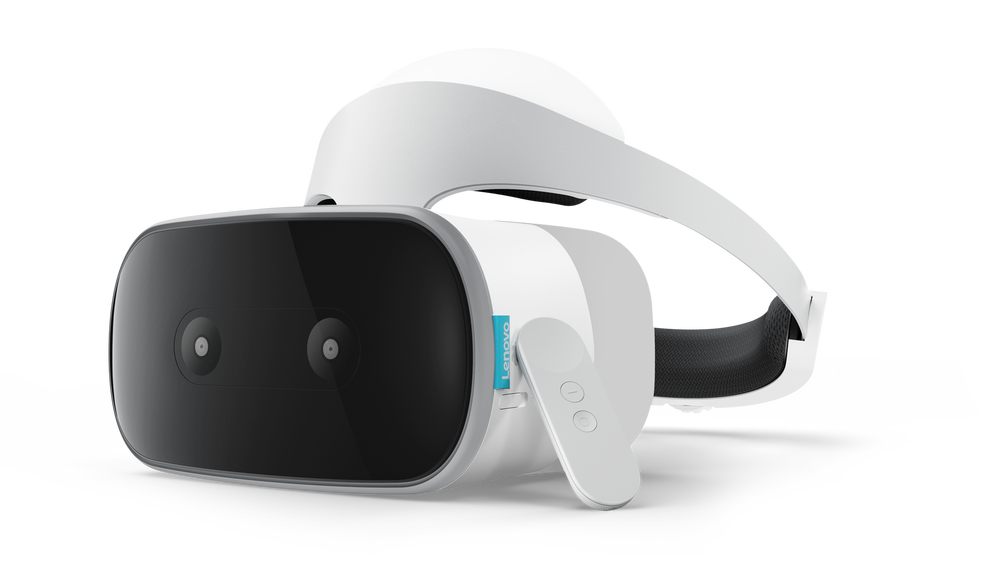When it comes to virtual reality, the first name comes to our mind is HTC vibe. However for casual consumers, the most convenient would be a standalone virtual system. Lenovo brings the same, known as Lenovo mirage solo with the daydream.
While the Solo fits the Google Daydream Operating-System platform, giving a similar end-user experience to the Daydream View, the full process using Lenovo gear is far less complicated.
There’s no phone to slide in, it’s a more great headset and individual panels make for better comfort used, while it also provides levels of freedom for greater in-game control. We’ll look into its features and more so read on.
Lenovo unveiled the first standalone VR headset in Google’s Daydream portable VR ecosystem called the Mirage Solo.
Lenovo’s headset is the first and at the moment only standalone headset currently inside the Daydream app ecosystem.
“Lenovo’s headset marks an essential change for the Daydream platform system, giving the user a “more immersive and streamlined approach to experience the best of what Daydream has to offer without having to use a Smartphone.” Says Clay Bavor, VP of Virtual and Augmented Reality at Google
Lenovo is planning to reduce the selling price in order to avail it to more people. Some rumors also say that it may come with a $400 price tag. It may hit the market in mid-2018.
Mirage Solo is said to present users access to the entire Daydream catalog of over 250 apps and game titles, including Google apps like YouTube VR, Street View, Photographs, and Trips.
You can’t operate any regular Android phone or tablet apps in the headset. As the headset naturally runs a restricted variation of Android os which shows the Daydream VR store and ecosystem towards the wearer
Lenovo is concentrating on an ample six hours of battery life for Mirage, and you wish that they have been able to utilize all the extra room to design sufficient thermal dissipation so that consumers will have no more to worry about that it’s getting too hot which considerably reduces functionality.
Unlike the Daydream shell headsets though, the Mirage Solo brings inside-out positional tracking thanks to some front-facing cameras that allows the headset to track its position while transferring through 3-dimensional space.
This will make the headset much more like high-end tethered headsets.
Lenovo Mirage Specifications:
- Dimensions (W x L x H) (mm)-
- 204.01 x 269.5 x 179.86 (inches) : 8.03″ x 10.61″ x 7.08
- Weight:
- 645 g (1.42 lbs)
- Operating System:
- Daydream OS
- Processor:
- Qualcomm Snapdragon™ 835
- RAM
- 4 GB
- ROM
- 64 GB UFS
- Audio-
- Android N Pro Audio, 3.5 mm Audio Jack with Dual Microphones
- Card Slot-
- microSD Card; Up to 256 GB
- Battery-
- 4000 mAh Li-ion Polymer
- Lens –
- 2 x Fresnel-Aspheric, 110° FOV
- WLAN-
- WiFi 802.11 ac/n 2×2 MIMO Dual Band
- Display-
- 5.5″ Resolution QHD (2560 x 1440) LCD, 75 Hz
- Bluetooth-
- Bluetooth® 5.0 + BLE
- Box contains –
-
- Lenovo Mirage Solo
- Daydream Wireless Motion Controller
- Travel Adapter
- USB Type-C™ Cable
- 3.5 mm Earphones
- User Manual
- Quick Start Guide
- Warranty Card
Talking about the lens, the clarity is quite excellent. As predicted for a Liquid crystal display, there is virtually no mural coloration and illumination inconsistency involving pixels, which helps a lot with clarity.
The Mirage Solo’s inside-out positional tracking is identical with WorldSense tracking that Google introduced for standalone headsets last year. Utilizing the onboard cameras, the headset can accurately get its position by observing the world around it but does not seem for this camera to be functional for a successfully captured video.



